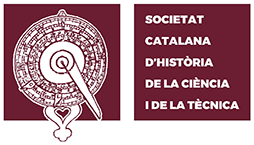Entrevista a Sebastian V. Grevsmühl, science historian
“The cold war was fundamental in the idea of the global environment”
Per Núria Pujol i revisada per Júlia Massó 10 de febrer de 2021
Last 10th February, Sebastian V. Grevsmühl delighted us with his talk “Exploring the borders of lab and field sciences in Antarctica: Which lessons for remote sensing through satellites?”, embedded in the colloquium cycle Situating space technology between lab and field science. Grevsmühl, is a science historian, specialized in environmental history and visual studies. Since 2012, he has a doctorate in the history of science (EHESS / Center Koyré). What’s more, he has directed and collaborated in several projects, such as ENVIGLOB which gave rise, in 2017, to a special issue published in the journal GEO: Geography and Environment. He is the author of numerous articles on the history of geophysical sciences and its relation with The Cold War, environmental history, spatial and polar history, as well as on visual cultures and the role of images in science.
History based on visual study is not a very common research field in France. How does your interest in this field appear? My interest in visual studies in science probably aroused from my first studies. At first, I studied cultural sciences in Germany. During those studies we were very interested about fundamental medium theories, especially the cultural influences and the consequences of those. The professor who holds the chair in cultural techniques was my tutor during the whole time, and he also knew a lot about the history of sciences. So that is where I got to visual studies and started wondering how techniques shape scientific statements or how images play a fundamental role on how we think about science.
Per llegir l’entrevista sencera clica aquí.


